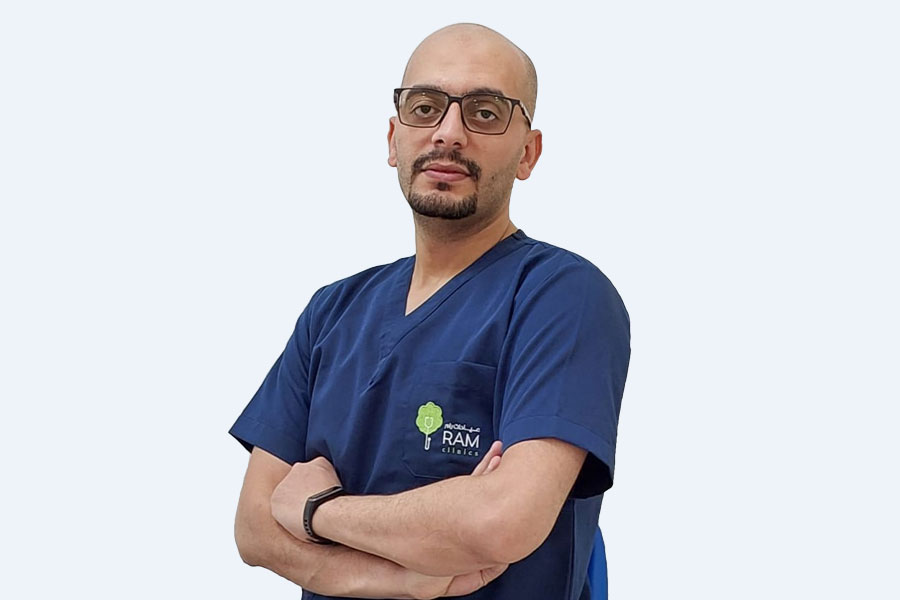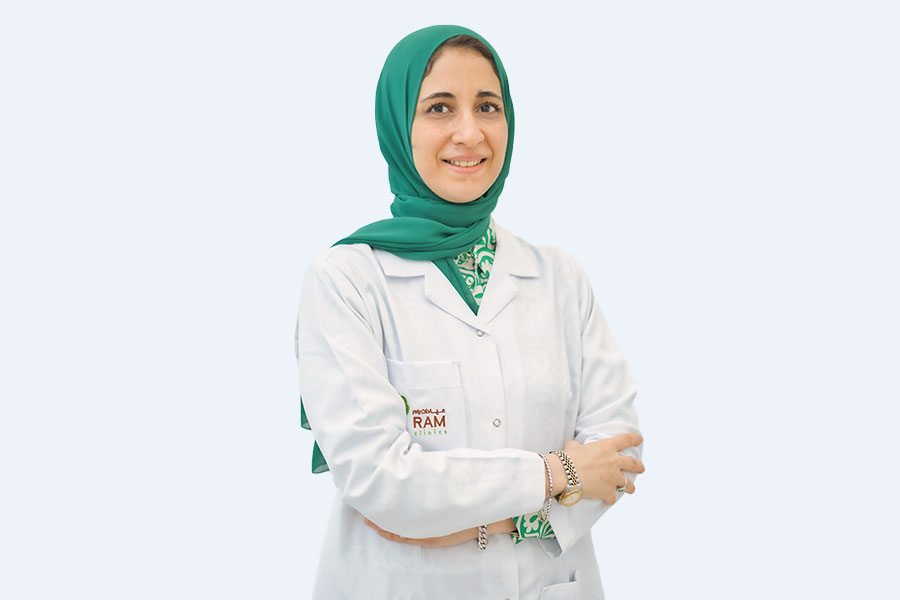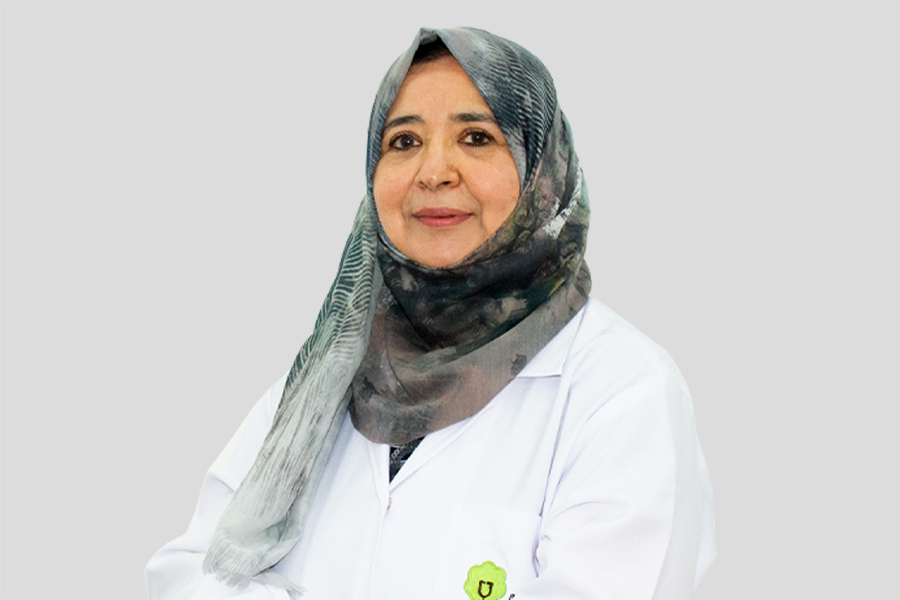

2555
SR

699
SR

449
SR

3222
SR

90
SR

180
SR
Ram Branches Eid Al Fitr offers 2024
2 جلسة تشقير حواجب + وجه / تقشير كربوني لنضارة الوجه
Book This Offer
999
SR

522
SR
Ram Branches Eid Al Fitr offers 2024
3 جلسات بيبي فيس (ديرمابن مع ميزوثيرابي)+ تنظيف بشرة مجاناً
Book This Offer
1222
SR

270
SR

599
SR

1399
SR

1299
SR

999
SR

299
SR

599
SR

950
SR

3000
SR

1399
SR

1999
SR

999
SR
Ram Branches Eid Al Fitr offers 2024
1 مل فيلر لتعديل استقامة الانف اللاجراحى + بوتكس لتصغير فتحات الانف + تنظيف بشرة
Book This Offer
2699
SR

999
SR

1800
SR

900
SR

1199
SR

899
SR

699
SR

822
SR

2300
SR

1099
SR

2899
SR

1699
SR

1024
SR

999
SR

90
SR

200
SR

300
SR
Ram Branches Eid Al Fitr offers 2024
جلسه تنظيف بشره عميقه بجهاز هيدرافيشيال الأمريكي الأصلي مع منتجات الديتوكس للنضاره
Book This Offer
350
SR
Ram Branches Eid Al Fitr offers 2024
جلسه تنظيف بشره عميقه بجهاز هيدرافيشيال الأمريكي الأصلي بمنتجات فرنسيه و ماسك الذهب
Book This Offer
450
SR
Ram Branches Eid Al Fitr offers 2024
جلسه تنظيف بشره عميقه بجهاز هيدرافيشيال الأمريكي الأصلي مع الخيوط الكوريه
Book This Offer
250
SR

588
SR
Ram Branches Eid Al Fitr offers 2024
3 جلسات ليزر إزالة الشعر بدون بطن وظهر للنساء + تنظيف بشرة مجاناً
Book This Offer
320
SR
Ram Branches Eid Al Fitr offers 2024
جلسة ليزر إزالة الشعر جسم كامل مع ظهر و بطن للنساء
Book This Offer
830
SR
Ram Branches Eid Al Fitr offers 2024
3 جلسات ليزر إزالة الشعر جسم كامل مع بطن و ظهر للنساء
Book This Offer
120
SR

150
SR

450
SR
Ram Branches Eid Al Fitr offers 2024
جلسة ليزر إزالة الشعر جسم كامل بدون المنطقة الخاصة
Book This Offer
1100
SR
Ram Branches Eid Al Fitr offers 2024
3 جلسات ليزر إزالة الشعر جسم كامل بدون المنطقة الخاصة
Book This Offer
150
SR

15990
SR

6990
SR

13990
SR

3990
SR

14990
SR

6990
SR

6990
SR

13990
SR

2790
SR

3990
SR

1590
SR

1490
SR
Ram Branches Eid Al Fitr offers 2024
3 جلسات فراكشنال للتوريد والتفتيح للمنطقة الحساسة + 3 جلسات ميزوثيرابي هدية
Book This Offer
4990
SR

3990
SR

8890
SR

2450
SR
Ram Branches Opening offers - branches of Medina and Jeddah, Al-Basateen District
زراعة الأسنان شامل التركيبه النهائي
Book This Offer
599
SR
Ram Branches Opening offers - branches of Medina and Jeddah, Al-Basateen District
تركيبات الزيركون
Book This Offer
6999
SR
Ram Branches Opening offers - branches of Medina and Jeddah, Al-Basateen District
ابتسامة هوليوود E-MAX 16 سن
Book This Offer
339
SR
Ram Branches Opening offers - branches of Medina and Jeddah, Al-Basateen District
تبييض الأسنان بتقنية zoom + تنظيف الأسنان
Book This Offer
300
SR
Ram Branches Opening offers - branches of Medina and Jeddah, Al-Basateen District
تقويم الاسنان يوجد دفعة مقدمة
Book This Offer
2899
SR
Ram Branches Opening offers - branches of Medina and Jeddah, Al-Basateen District
تقويم الاسنان للحالات البسيطة
Book This Offer
500
SR
Ram Branches Opening offers - branches of Medina and Jeddah, Al-Basateen District
تقويم الاسنان الشفاف يوجد دفعة مقدمة
Book This Offer
90
SR
Ram Branches Opening offers - branches of Medina and Jeddah, Al-Basateen District
جلسة تشقير حواجب
Book This Offer
180
SR
Ram Branches Opening offers - branches of Medina and Jeddah, Al-Basateen District
2 جلسة تشقير حواجب + وجه / تقشير كربوني لنضارة الوجه
Book This Offer
999
SR
Ram Branches Opening offers - branches of Medina and Jeddah, Al-Basateen District
3 جلسات فراكشنال ليزر
Book This Offer
522
SR
Ram Branches Opening offers - branches of Medina and Jeddah, Al-Basateen District
3 جلسات بيبي فيس (ديرمابن مع ميزوثيرابي)+ تنظيف بشرة مجاناً
Book This Offer
1222
SR
Ram Branches Opening offers - branches of Medina and Jeddah, Al-Basateen District
3 جلسات خلايا جذعية شعر/ بشرة
Book This Offer
270
SR
Ram Branches Opening offers - branches of Medina and Jeddah, Al-Basateen District
3 جلسات توريد شفايف
Book This Offer
599
SR
Ram Branches Opening offers - branches of Medina and Jeddah, Al-Basateen District
جلسه بلازما ريجين لاب
Book This Offer
1399
SR
Ram Branches Opening offers - branches of Medina and Jeddah, Al-Basateen District
3 جلسات بلازما ريجين لاب
Book This Offer
1299
SR
Ram Branches Opening offers - branches of Medina and Jeddah, Al-Basateen District
تقشير بارد + الكريم المنزلي
Book This Offer
999
SR
Ram Branches Opening offers - branches of Medina and Jeddah, Al-Basateen District
بوتكس وجه كامل (siax)
Book This Offer
299
SR
Ram Branches Opening offers - branches of Medina and Jeddah, Al-Basateen District
بوتكس رفع الحواجب او تصغير فتحات الانف
Book This Offer
599
SR
Ram Branches Opening offers - branches of Medina and Jeddah, Al-Basateen District
فيلر 1 مل (ستارفيل)
Book This Offer
950
SR
Ram Branches Opening offers - branches of Medina and Jeddah, Al-Basateen District
فيلر 1 مل (جوفيدرم او توسيال)
Book This Offer
3000
SR
Ram Branches Opening offers - branches of Medina and Jeddah, Al-Basateen District
فيلر 6 مل (ستارفيل) + تنظيف بشرة هدية
Book This Offer
1399
SR
Ram Branches Opening offers - branches of Medina and Jeddah, Al-Basateen District
انفني أو انتراسل أو سكارليت + بروفايلو
Book This Offer
1999
SR
Ram Branches Opening offers - branches of Medina and Jeddah, Al-Basateen District
ابرة الكالسيوم رادياس + بوتكس للجبهه
Book This Offer
999
SR
Ram Branches Opening offers - branches of Medina and Jeddah, Al-Basateen District
1 مل فيلر لتعديل استقامة الانف اللاجراحى + بوتكس لتصغير فتحات الانف+ تنظيف بشرة
Book This Offer
2699
SR
Ram Branches Opening offers - branches of Medina and Jeddah, Al-Basateen District
جلسة خيوط لشد الوجه والرقبه (10 خيوط)
Book This Offer
999
SR
Ram Branches Opening offers - branches of Medina and Jeddah, Al-Basateen District
ابرة بروفايلو 2 مل + كونسيلر طبي هدية
Book This Offer
1800
SR
Ram Branches Opening offers - branches of Medina and Jeddah, Al-Basateen District
2 ابرة بروفايلو 4 مل + 1 مل فيلر Aliaxinهدية
Book This Offer
900
SR
Ram Branches Opening offers - branches of Medina and Jeddah, Al-Basateen District
ابرة نيوفاوند / بروفاوند
Book This Offer
1199
SR
Ram Branches Opening offers - branches of Medina and Jeddah, Al-Basateen District
إبرة الجوري للشد والنضارة
Book This Offer
899
SR
Ram Branches Opening offers - branches of Medina and Jeddah, Al-Basateen District
ابرة العنبر
Book This Offer
699
SR
Ram Branches Opening offers - branches of Medina and Jeddah, Al-Basateen District
ابرة اكسير الشباب ايوما
Book This Offer
822
SR
Ram Branches Opening offers - branches of Medina and Jeddah, Al-Basateen District
اكسوزوم ( الابرة الثلاثية 2.5 مل)
Book This Offer
2300
SR
Ram Branches Opening offers - branches of Medina and Jeddah, Al-Basateen District
سكالبترا ( الشد المائي)
Book This Offer
1099
SR
Ram Branches Opening offers - branches of Medina and Jeddah, Al-Basateen District
إبرة الاينوفيال لتفتيح البشرة الطبيعي
Book This Offer
2899
SR
Ram Branches Opening offers - branches of Medina and Jeddah, Al-Basateen District
باكدج علاج المسام والندبات وحب الشباب
Book This Offer
1699
SR
Ram Branches Opening offers - branches of Medina and Jeddah, Al-Basateen District
باكدج جلسه سنووايت للتفتيح والنضارة
Book This Offer
1024
SR
Ram Branches Opening offers - branches of Medina and Jeddah, Al-Basateen District
باقة جلسة العنبر
Book This Offer
999
SR
Ram Branches Opening offers - branches of Medina and Jeddah, Al-Basateen District
جلسة Cell boster لشد الجلد
Book This Offer
90
SR
Ram Branches Opening offers - branches of Medina and Jeddah, Al-Basateen District
جلسه ازاله الرؤوس السوداء
Book This Offer
200
SR
Ram Branches Opening offers - branches of Medina and Jeddah, Al-Basateen District
جلسه تنظيف بشره مع ماسك الكولاجين
Book This Offer
300
SR
Ram Branches Opening offers - branches of Medina and Jeddah, Al-Basateen District
جلسه تنظيف بشره عميقه بجهاز هيدرافيشيال الأمريكي الأصلي مع منتجات الديتوكس للنضاره
Book This Offer
350
SR
Ram Branches Opening offers - branches of Medina and Jeddah, Al-Basateen District
جلسه تنظيف بشره عميقه بجهاز هيدرافيشيال الأمريكي الأصلي بمنتجات فرنسيه و ماسك الذهب
Book This Offer
450
SR
Ram Branches Opening offers - branches of Medina and Jeddah, Al-Basateen District
جلسه تنظيف بشره عميقه بجهاز هيدرافيشيال الأمريكي الأصلي مع الخيوط الكوريه ( الخيوط السحريه )
Book This Offer
250
SR
Ram Branches Opening offers - branches of Medina and Jeddah, Al-Basateen District
جلسة ليزر إزالة الشعر بدون بطن وظهر للنساء
Book This Offer
588
SR
Ram Branches Opening offers - branches of Medina and Jeddah, Al-Basateen District
3 جلسات ليزر إزالة الشعر بدون بطن وظهر للنساء + تنظيف بشرة مجاناً
Book This Offer
320
SR
Ram Branches Opening offers - branches of Medina and Jeddah, Al-Basateen District
جلسة ليزر إزالة الشعر جسم كامل مع ظهر و بطن للنساء
Book This Offer
830
SR
Ram Branches Opening offers - branches of Medina and Jeddah, Al-Basateen District
3 جلسات ليزر إزالة الشعر جسم كامل مع بطن و ظهر للنساء
Book This Offer
120
SR
Ram Branches Opening offers - branches of Medina and Jeddah, Al-Basateen District
جلسة ليزر إزالة الشعر بيكيني واندر ارم للنساء
Book This Offer
150
SR
Ram Branches Opening offers - branches of Medina and Jeddah, Al-Basateen District
جلسة ليزرتحديد لحيه + ابطين
Book This Offer
450
SR
Ram Branches Opening offers - branches of Medina and Jeddah, Al-Basateen District
جلسة ليزر إزالة الشعر جسم كامل بدون المنطقة الخاصة
Book This Offer
1100
SR
Ram Branches Opening offers - branches of Medina and Jeddah, Al-Basateen District
3 جلسات ليزر إزالة الشعر جسم كامل بدون المنطقة الخاصة
Book This Offer
150
SR
Ram Branches Opening offers - branches of Medina and Jeddah, Al-Basateen District
جلسة ليزر إزالة الشعر منطقة واحدة
Book This Offer
2450
SR

599
SR

6999
SR

339
SR
Ram Branches Opening Offers khobar Olaya branch
تبييض الأسنان بتقنية zoom + تنظيف الأسنان
Book This Offer
300
SR

2899
SR

500
SR
Ram Branches Opening Offers khobar Olaya branch
تقويم الاسنان الشفاف يوجد دفعة مقدمة
Book This Offer
90
SR

180
SR
Ram Branches Opening Offers khobar Olaya branch
2 جلسة تشقير حواجب + وجه / تقشير كربوني لنضارة الوجه
Book This Offer
999
SR

522
SR
Ram Branches Opening Offers khobar Olaya branch
3 جلسات بيبي فيس (ديرمابن مع ميزوثيرابي)+ تنظيف بشرة مجاناً
Book This Offer
1222
SR

270
SR

599
SR

1399
SR

1299
SR

999
SR

299
SR
Ram Branches Opening Offers khobar Olaya branch
بوتكس رفع الحواجب او تصغير فتحات الانف
Book This Offer
599
SR

950
SR

3000
SR
Ram Branches Opening Offers khobar Olaya branch
فيلر 6 مل (ستارفيل) + تنظيف بشرة هدية
Book This Offer
1399
SR
Ram Branches Opening Offers khobar Olaya branch
انفني أو انتراسل أو سكارليت + بروفايلو
Book This Offer
1999
SR
Ram Branches Opening Offers khobar Olaya branch
ابرة الكالسيوم رادياس + بوتكس للجبهه
Book This Offer
999
SR
Ram Branches Opening Offers khobar Olaya branch
1 مل فيلر لتعديل استقامة الانف اللاجراحى + بوتكس لتصغير فتحات الانف + تنظيف بشرة
Book This Offer
2699
SR
Ram Branches Opening Offers khobar Olaya branch
جلسة خيوط لشد الوجه والرقبه (10 خيوط)
Book This Offer
999
SR
Ram Branches Opening Offers khobar Olaya branch
ابرة بروفايلو 2 مل + كونسيلر طبي هدية
Book This Offer
1800
SR
Ram Branches Opening Offers khobar Olaya branch
2 ابرة بروفايلو 4 مل + 1 مل فيلر Aliaxinهدية
Book This Offer
900
SR

1199
SR

899
SR

699
SR

822
SR

2300
SR

1099
SR
Ram Branches Opening Offers khobar Olaya branch
إبرة الاينوفيال لتفتيح البشرة الطبيعي
Book This Offer
2899
SR
Ram Branches Opening Offers khobar Olaya branch
باكدج علاج المسام والندبات وحب الشباب
Book This Offer
1699
SR

1024
SR

999
SR

90
SR

200
SR

300
SR
Ram Branches Opening Offers khobar Olaya branch
جلسه تنظيف بشره عميقه بجهاز هيدرافيشيال الأمريكي الأصلي مع منتجات الديتوكس للنضاره
Book This Offer
350
SR
Ram Branches Opening Offers khobar Olaya branch
جلسه تنظيف بشره عميقه بجهاز هيدرافيشيال الأمريكي الأصلي بمنتجات فرنسيه و ماسك الذهب
Book This Offer
450
SR
Ram Branches Opening Offers khobar Olaya branch
جلسه تنظيف بشره عميقه بجهاز هيدرافيشيال الأمريكي الأصلي مع الخيوط الكوريه ( الخيوط السحريه )
Book This Offer
250
SR
Ram Branches Opening Offers khobar Olaya branch
جلسة ليزر إزالة الشعر بدون بطن وظهر للنساء
Book This Offer
588
SR
Ram Branches Opening Offers khobar Olaya branch
3 جلسات ليزر إزالة الشعر بدون بطن وظهر للنساء + تنظيف بشرة مجاناً
Book This Offer
320
SR
Ram Branches Opening Offers khobar Olaya branch
جلسة ليزر إزالة الشعر جسم كامل مع ظهر و بطن للنساء
Book This Offer
830
SR
Ram Branches Opening Offers khobar Olaya branch
3 جلسات ليزر إزالة الشعرجسم كامل مع بطن و ظهر للنساء
Book This Offer
120
SR
Ram Branches Opening Offers khobar Olaya branch
جلسة ليزر إزالة الشعر بيكيني واندر ارم للنساء
Book This Offer
150
SR

450
SR
Ram Branches Opening Offers khobar Olaya branch
جلسة ليزر إزالة الشعر جسم كامل بدون المنطقة الخاصة
Book This Offer
1100
SR
Ram Branches Opening Offers khobar Olaya branch
3 جلسات ليزر إزالة الشعر جسم كامل بدون المنطقة الخاصة
Book This Offer
150
SR

2450
SR
Ram Branches Opening Offers Dammam Beach district branch
زراعة الأسنان شامل التركيبه النهائي
Book This Offer
599
SR

6999
SR
Ram Branches Opening Offers Dammam Beach district branch
ابتسامة هوليوود E-MAX 16 سن
Book This Offer
339
SR
Ram Branches Opening Offers Dammam Beach district branch
تبييض الأسنان بتقنية zoom + تنظيف الأسنان
Book This Offer
300
SR
Ram Branches Opening Offers Dammam Beach district branch
تقويم الاسنان يوجد دفعة مقدمة
Book This Offer
2899
SR
Ram Branches Opening Offers Dammam Beach district branch
تقويم الاسنان للحالات البسيطة
Book This Offer
500
SR
Ram Branches Opening Offers Dammam Beach district branch
تقويم الاسنان الشفاف يوجد دفعة مقدمة
Book This Offer
90
SR

180
SR
Ram Branches Opening Offers Dammam Beach district branch
2 جلسة تشقير حواجب + وجه / تقشير كربوني لنضارة الوجه
Book This Offer
999
SR

522
SR
Ram Branches Opening Offers Dammam Beach district branch
3 جلسات بيبي فيس (ديرمابن مع ميزوثيرابي)+ تنظيف بشرة مجاناً
Book This Offer
1222
SR
Ram Branches Opening Offers Dammam Beach district branch
3 جلسات خلايا جذعية شعر/ بشرة
Book This Offer
270
SR

599
SR

1399
SR

1299
SR
Ram Branches Opening Offers Dammam Beach district branch
تقشير بارد + الكريم المنزلي
Book This Offer
999
SR

299
SR
Ram Branches Opening Offers Dammam Beach district branch
بوتكس رفع الحواجب او تصغير فتحات الانف
Book This Offer
599
SR

950
SR
Ram Branches Opening Offers Dammam Beach district branch
فيلر 1 مل (جوفيدرم او توسيال)
Book This Offer
3000
SR
Ram Branches Opening Offers Dammam Beach district branch
فيلر 6 مل (ستارفيل) + تنظيف بشرة هدية
Book This Offer
1399
SR
Ram Branches Opening Offers Dammam Beach district branch
انفني أو انتراسل أو سكارليت + بروفايلو
Book This Offer
1999
SR
Ram Branches Opening Offers Dammam Beach district branch
ابرة الكالسيوم رادياس + بوتكس للجبهه
Book This Offer
999
SR
Ram Branches Opening Offers Dammam Beach district branch
1 مل فيلر لتعديل استقامة الانف اللاجراحى + بوتكس لتصغير فتحات الانف+ تنظيف بشرة
Book This Offer
2699
SR
Ram Branches Opening Offers Dammam Beach district branch
جلسة خيوط لشد الوجه والرقبه (10 خيوط)
Book This Offer
999
SR
Ram Branches Opening Offers Dammam Beach district branch
ابرة بروفايلو 2 مل + كونسيلر طبي هدية
Book This Offer
1800
SR
Ram Branches Opening Offers Dammam Beach district branch
2 ابرة بروفايلو 4 مل + 1 مل فيلر Aliaxin هدية
Book This Offer
900
SR

1199
SR

899
SR

699
SR

822
SR
Ram Branches Opening Offers Dammam Beach district branch
اكسوزوم ( الابرة الثلاثية 2.5 مل)
Book This Offer
2300
SR

1099
SR
Ram Branches Opening Offers Dammam Beach district branch
إبرة الاينوفيال لتفتيح البشرة الطبيعي
Book This Offer
2899
SR
Ram Branches Opening Offers Dammam Beach district branch
باكدج علاج المسام والندبات وحب الشباب
Book This Offer
1699
SR
Ram Branches Opening Offers Dammam Beach district branch
باكدج جلسه سنووايت للتفتيح والنضارة
Book This Offer
1024
SR

999
SR

90
SR

200
SR
Ram Branches Opening Offers Dammam Beach district branch
جلسه تنظيف بشره مع ماسك الكولاجين
Book This Offer
300
SR
Ram Branches Opening Offers Dammam Beach district branch
جلسه تنظيف بشره عميقه بجهاز هيدرافيشيال الأمريكي الأصلي مع منتجات الديتوكس للنضاره
Book This Offer
350
SR
Ram Branches Opening Offers Dammam Beach district branch
جلسه تنظيف بشره عميقه بجهاز هيدرافيشيال الأمريكي الأصلي بمنتجات فرنسيه و ماسك الذهب
Book This Offer
450
SR
Ram Branches Opening Offers Dammam Beach district branch
جلسه تنظيف بشره عميقه بجهاز هيدرافيشيال الأمريكي الأصلي مع الخيوط الكوريه ( الخيوط السحريه )
Book This Offer
250
SR
Ram Branches Opening Offers Dammam Beach district branch
جلسة ليزر إزالة الشعر بدون بطن وظهر للنساء
Book This Offer
588
SR
Ram Branches Opening Offers Dammam Beach district branch
3 جلسات ليزر إزالة الشعر بدون بطن وظهر للنساء + تنظيف بشرة مجاناً
Book This Offer
320
SR
Ram Branches Opening Offers Dammam Beach district branch
جلسة ليزر إزالة الشعر جسم كامل مع ظهر و بطن للنساء
Book This Offer
830
SR
Ram Branches Opening Offers Dammam Beach district branch
3 جلسات ليزر إزالة الشعرجسم كامل مع بطن و ظهر للنساء
Book This Offer
120
SR
Ram Branches Opening Offers Dammam Beach district branch
جلسة ليزر إزالة الشعر بيكيني واندر ارم للنساء
Book This Offer
150
SR
Ram Branches Opening Offers Dammam Beach district branch
جلسة ليزرتحديد لحيه + ابطين
Book This Offer
450
SR
Ram Branches Opening Offers Dammam Beach district branch
جلسة ليزر إزالة الشعر جسم كامل بدون المنطقة الخاصة
Book This Offer
1100
SR
Ram Branches Opening Offers Dammam Beach district branch
3 جلسات ليزر إزالة الشعر جسم كامل بدون المنطقة الخاصة
Book This Offer
150
SR
Ram Branches Opening Offers Dammam Beach district branch
جلسة ليزر إزالة الشعر منطقة واحدة
Book This Offer
2450
SR

599
SR

6999
SR

339
SR
Ram Branches Eid Offers Khafgy And Ras Tanura
تبييض الأسنان بتقنية zoom + تنظيف الأسنان
Book This Offer
300
SR

2899
SR

500
SR

90
SR

180
SR
Ram Branches Eid Offers Khafgy And Ras Tanura
2 جلسة تشقير حواجب + وجه / تقشير كربوني لنضارة الوجه
Book This Offer
999
SR

522
SR
Ram Branches Eid Offers Khafgy And Ras Tanura
3 جلسات بيبي فيس (ديرمابن مع ميزوثيرابي)+ تنظيف بشرة مجاناً
Book This Offer
1222
SR

270
SR

599
SR

1399
SR

1299
SR

999
SR

299
SR
Ram Branches Eid Offers Khafgy And Ras Tanura
بوتكس رفع الحواجب او تصغير فتحات الانف
Book This Offer
599
SR

950
SR

3000
SR

1399
SR
Ram Branches Eid Offers Khafgy And Ras Tanura
انفني أو انتراسل أو سكارليت + بروفايلو
Book This Offer
1999
SR

999
SR
Ram Branches Eid Offers Khafgy And Ras Tanura
1 مل فيلر لتعديل استقامة الانف اللاجراحى + بوتكس لتصغير فتحات الانف+ تنظيف بشرة
Book This Offer
2699
SR

999
SR

1800
SR
Ram Branches Eid Offers Khafgy And Ras Tanura
2 ابرة بروفايلو 4 مل + 1 مل فيلر Aliaxinهدية
Book This Offer
900
SR

1199
SR

899
SR

699
SR

822
SR

2300
SR

1099
SR

2899
SR

1699
SR

1024
SR

999
SR

90
SR

200
SR

300
SR
Ram Branches Eid Offers Khafgy And Ras Tanura
جلسه تنظيف بشره عميقه بجهاز هيدرافيشيال الأمريكي الأصلي مع منتجات الديتوكس للنضاره
Book This Offer
350
SR
Ram Branches Eid Offers Khafgy And Ras Tanura
جلسه تنظيف بشره عميقه بجهاز هيدرافيشيال الأمريكي الأصلي بمنتجات فرنسيه و ماسك الذهب
Book This Offer
450
SR
Ram Branches Eid Offers Khafgy And Ras Tanura
جلسه تنظيف بشره عميقه بجهاز هيدرافيشيال الأمريكي الأصلي مع الخيوط الكوريه ( الخيوط السحريه )
Book This Offer
250
SR
Ram Branches Eid Offers Khafgy And Ras Tanura
جلسة ليزر إزالة الشعر بدون بطن وظهر للنساء
Book This Offer
588
SR
Ram Branches Eid Offers Khafgy And Ras Tanura
3 جلسات ليزر إزالة الشعر بدون بطن وظهر للنساء + تنظيف بشرة مجاناً
Book This Offer
320
SR
Ram Branches Eid Offers Khafgy And Ras Tanura
جلسة ليزر إزالة الشعر جسم كامل مع ظهر و بطن للنساء
Book This Offer
830
SR
Ram Branches Eid Offers Khafgy And Ras Tanura
3 جلسات ليزر إزالة الشعرجسم كامل مع بطن و ظهر للنساء
Book This Offer
120
SR
Ram Branches Eid Offers Khafgy And Ras Tanura
جلسة ليزر إزالة الشعر بيكيني واندر ارم للنساء
Book This Offer
150
SR

450
SR
Ram Branches Eid Offers Khafgy And Ras Tanura
جلسة ليزر إزالة الشعر جسم كامل بدون المنطقة الخاصة
Book This Offer
1100
SR
Ram Branches Eid Offers Khafgy And Ras Tanura
3 جلسات ليزر إزالة الشعر جسم كامل بدون المنطقة الخاصة
Book This Offer
150
SR

350
SR
Ram Branches Special Offers
جلسة ليزر جسم كامل بالذكاء الاصطناعي جهاز كلاريتي للنساء
Book This Offer
899
SR
Ram Branches Special Offers
3 جلسات ليزر جسم كامل بالذكاء الصناعي جهاز كلاريتي للنساء
Book This Offer
165
SR

699
SR
Ram Branches Special Offers
جلسة ليزر كلاريتي رجال جسم كامل بدون المنطقة الخاصة جهاز كلاريتي
Book This Offer
1899
SR
Ram Branches Special Offers
3 جلسات ليزر كلاريتي رجال جسم كامل بدون المنطقة الخاصة جهاز كلاريتي
Book This Offer
165
SR

999
SR
Ram Branches Special Offers
5 جلسات تكسير دهون منطقة البطن أو الأرداف بتقنية الفانكويش
Book This Offer
1399
SR
Ram Branches Special Offers
4 جلسات اكزيليس لشد الجلد منطقة واحدة + Double Chain 1Ml
Book This Offer
850
SR
Ram Branches Special Offers
جلسة ليبوسيل لنحت الجسم بدون جراحة بتقنية الهايفو البارد
Book This Offer
3199
SR
Ram Branches Special Offers
4 جلسات ليبوسيل لنحت الجسم بدون جراحة بتقنية الهايفو البارد
Book This Offer
999
SR
Ram Branches Special Offers
جلسة الترافورمر هايفو أو الترا كيو سيل لشد الوجه و الرقبة
Book This Offer
2799
SR
Ram Branches Special Offers



















































